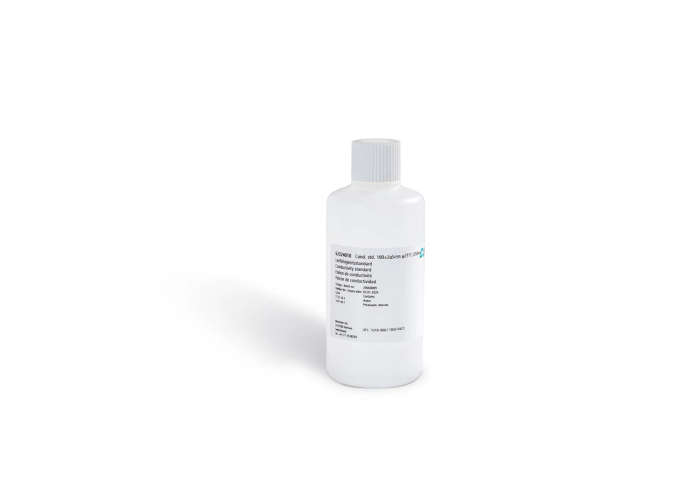
Conductivity 80 000 μS/cm / 80mS/cm 250ml
Check my rate
| Main centres: | 1-3 business days |
| Regional areas: | 3-4 business days |
| Remote areas: | 3-5 business days |

| Main centres: | 1-3 business days |
| Regional areas: | 3-4 business days |
| Remote areas: | 3-5 business days |
Conductivity 80 000 μS/cm / 80mS/cm
A conductivity of 80,000 µS/cm (or 80 mS/cm) indicates a solution with extremely high ionic content, meaning it is highly capable of conducting electricity, a property typically associated with concentrated salt, acid, or base solutions like industrial brines or strong electrolytes. This value is commonly used for calibrating conductivity probes and is available as a standard solution, often prepared with a NIST-traceable potassium chloride solution.
Conductivity 80 000 μS/cm / 80mS/cm
Conductivity 80 000 μS/cm / 80mS/cm Understanding the Value:
µS/cm (microSiemens per centimeter): This unit measures the conductivity at a microscopic level.
mS/cm (milliSiemens per centimeter): This unit is equivalent to 1,000 µS/cm, so 80,000 µS/cm is equal to 80 mS/cm.
Significance: A high conductivity value like 80,000 µS/cm signifies a highly conductive solution.
Applications and Standards:
Calibration: Solutions with a conductivity of 80,000 µS/cm are frequently used as a standard for calibrating conductivity meters and probes, ensuring accurate measurements in various applications.
Concentrated Solutions: This conductivity level is found in highly concentrated solutions such as industrial brines or strong electrolytes, where a high concentration of ions is present.
Traceability: Many conductivity standards, including those at 80,000 µS/cm, are prepared using methods traceable to national or international standards (e.g., NIST-traceable potassium chloride solutions), which ensures accuracy and reliability.
Conductivity 80 000 μS/cm / 80mS/cm